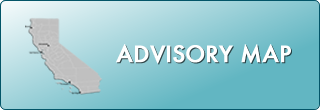OEHHA Releases Report and “Safe Eating Guidelines” For Fish in Folsom Lake and Lake Natoma
FOR IMMEDIATE RELEASE
CONTACT: SAM DELSON
(916) 324-0955 (office)
(916) 764-0955 (mobile)
SACRAMENTO – The California Environmental Protection Agency’s Office of Environmental Health Hazard Assessment (OEHHA) has released a new report and “safe eating guidelines” for consumption of sport fish from Folsom Lake and Lake Natoma.
The guidelines provide information to fish consumers to help them choose the safest fish to eat from Lake Natoma in Sacramento County and Folsom Lake in Sacramento, Placer and El Dorado counties. They also recommend how often these fish can be eaten to maximize their health benefits while minimizing the health risks from mercury contamination.
“These guidelines will help fish consumers to choose the safest fish to eat,” said OEHHA Director Dr. Joan Denton.
Fish are good sources of protein and heart-healthy nutrients, including “omega 3” fatty acids that are beneficial for brain development in babies and children. However, runoff from old gold mines has contaminated some fish with mercury, which can harm the nervous system in children and can be passed from pregnant women to their developing fetuses through the placenta.
“Strong scientific evidence has demonstrated many health benefits from eating fish, but those benefits must be balanced against the risks from mercury contamination,” Denton said. “Fish from Folsom Lake and Lake Natoma can be part of a healthy, balanced diet if people – especially women of childbearing age and children – carefully monitor their fish consumption and choose species that are lower in mercury.”
The “safe eating” guidelines include recommendations that women ages 18-45, including pregnant and breastfeeding women, and children ages 1-17 may eat two servings per week of bluegill or green sunfish or other sunfish or trout that are no more than 16 inches long. Men over 17 and women over 45 can safely eat five servings per week from these species.
Women age 45 or younger and children should not eat Chinook salmon, catfish, trout that are more than 16 inches long, or largemouth, smallmouth or spotted bass. Women over 45 and men can safely eat one serving per week of these species, except they should not eat catfish from Lake Natoma.
The recommendations are based on fish servings that are about the size and thickness of a person’s hand. For adults, a serving is approximately 8 ounces of uncooked fish or 6 ounces of cooked fish. Children up to age 12 should eat about half as much.
The new report and guidelines replace a 2004 fish advisory for Lake Natoma and are OEHHA’s first advisory for fish from Folsom Lake. They are based on studies conducted by the U.S. Geological Survey, the U.S. Bureau of Reclamation and the University of California at Davis.
The California Department of Public Health has printed about 50,000 copies of the guidelines pamphlet, including versions in Vietnamese, Cambodian and Spanish, which will be available at the state parks kiosks at the two lakes.
Visit oehha.ca.gov for more information on fish advisories for Folsom Lake and Lake Natoma, as well as health advisories on fish caught from other California locations.
Chemical Reference
Related Notices
Fish, Incident Response, Seafood Safety, and Harmful Algal Bloom Section
Sacramento Office
1001 I Street
Sacramento, CA 95814
Phone: (916) 423-7572
Fish@oehha.ca.gov

